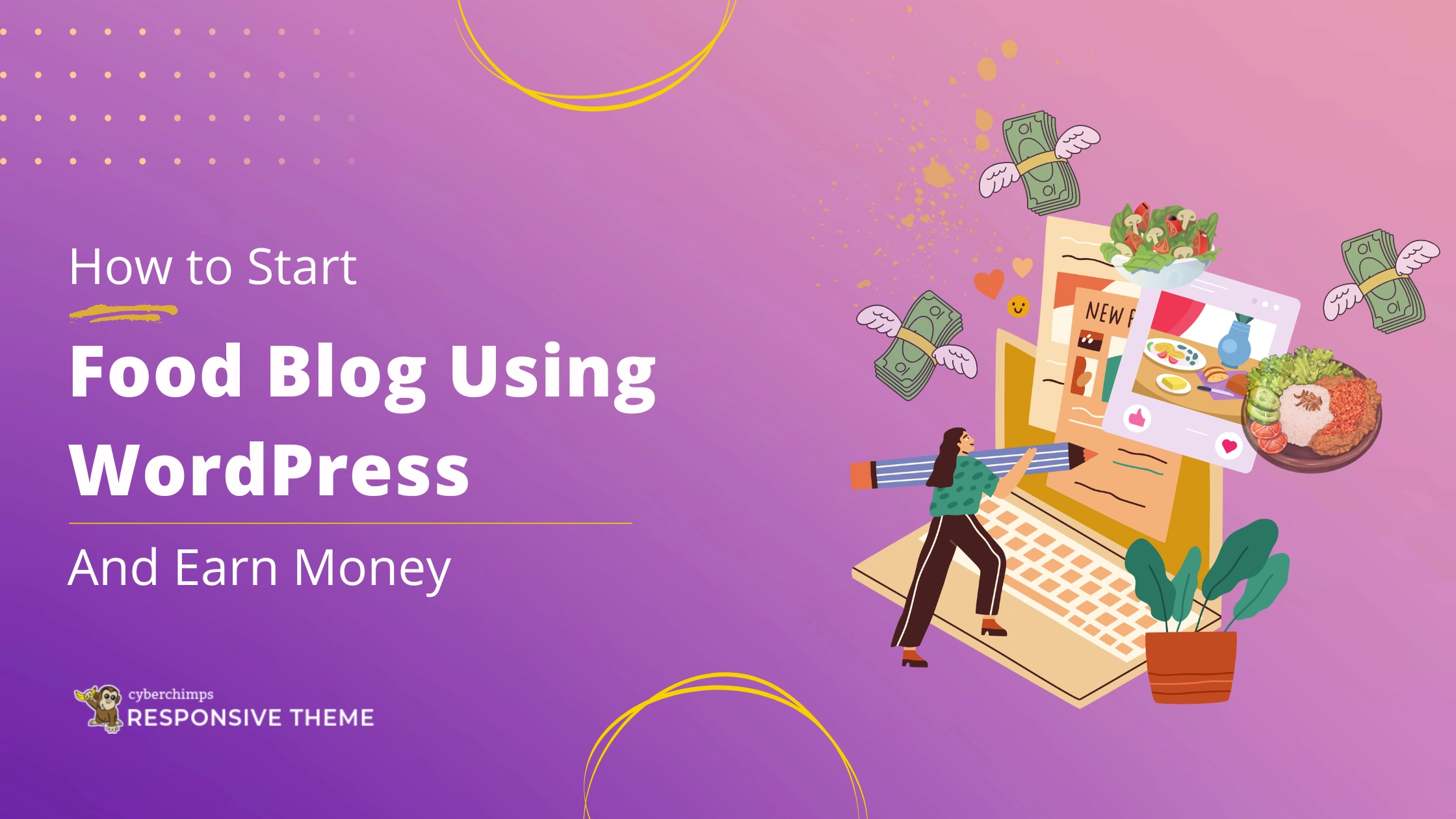Have you ever wanted to share your favorite recipes, a record of your cooking travels, or your food photography with the world?
Creating a food blog is one of the best and fun ways to take your passion for cooking and create an online platform.
If your goal is to create a personal recipe journal, inspire others to eat healthfully, build an online community, or potentially earn money from your love of food, starting a food blog can serve as a platform to describe your experience and find a niche audience.
In this article, we will show you how to start a food blog from scratch without the need for code. We will touch on selecting a niche, laying out a website with WordPress, and writing blog posts that food lovers around the globe will want to read and share.
Continue reading to know who it is done!
Why Start a Food Blogging Website?
For the past couple of years, food blogging has fully replaced our favorite cookbooks. It is faster to Google a recipe than to buy a cookery book. And it is easier than ever before to find innovative, delicious recipes with fresh and affordable ingredients on the Internet.
This has influenced the tendency to make a career out of writing about food.
Food bloggers have become decent competitors to already established writers. Every day, they highlight all kinds of recipes on the websites for free: appetizers, main dishes, desserts, breakfasts and brunches, vegetarian recipes, cocktails, and drinks.
Food blogs contain thousands of recipes to suit everyone’s taste. People just do what they are passionate about and get money from it.
For those who also want to start a food blog and make it a huge success, we have a couple of useful tips and tricks, too. So, take a pen and make a note.
And now, let’s find out what the main secrets of any successful culinary blog are.
You might think that building a food website requires a lot of money and code. Then you are mistaken. With the recipe theme, you can get your website up & running in no time.
Using Responisve Plus makes it a lot easier for you.
The templates come with the pre-designed home page, blog page, and about page, so you don’t have to create everything from scratch. You can use Responsive Addons for Elementor to add more functionalities to the site.
What All You Need For a Food Blog Website
Starting a food blog is exciting, and with the right setup, you can create a professional, scalable website with your own domain name and unique style. Follow these steps to launch a food blog that’s ready to grow with you:
1. Choose a Name and Buy a Matching Domain
Your blog name is the foundation of your brand. Choose something short, catchy, and easy to remember. Once you have a name, register a matching domain (like yourblogname.com). A custom domain adds credibility and makes your blog look professional from day one.
2. Get Reliable Web Hosting
A web host stores your website’s files and serves them to visitors. Reliable web hosting is crucial for speed, uptime, and security. Look for a host that offers good customer support and easy WordPress installation. This ensures your food blog runs smoothly as traffic increases.
3. Install WordPress
WordPress powers millions of blogs worldwide because it’s easy to use yet extremely flexible. Most web hosts provide one-click WordPress installation, so you can get your site up and running quickly. With WordPress, you’ll have access to countless themes and plugins to customize your blog.
4. Install a WordPress Theme (Use Responsive Theme)

Your theme controls your blog’s design and layout. The Responsive Theme is a great option for beginners and pros alike. It’s lightweight, SEO-friendly, and optimized for performance.
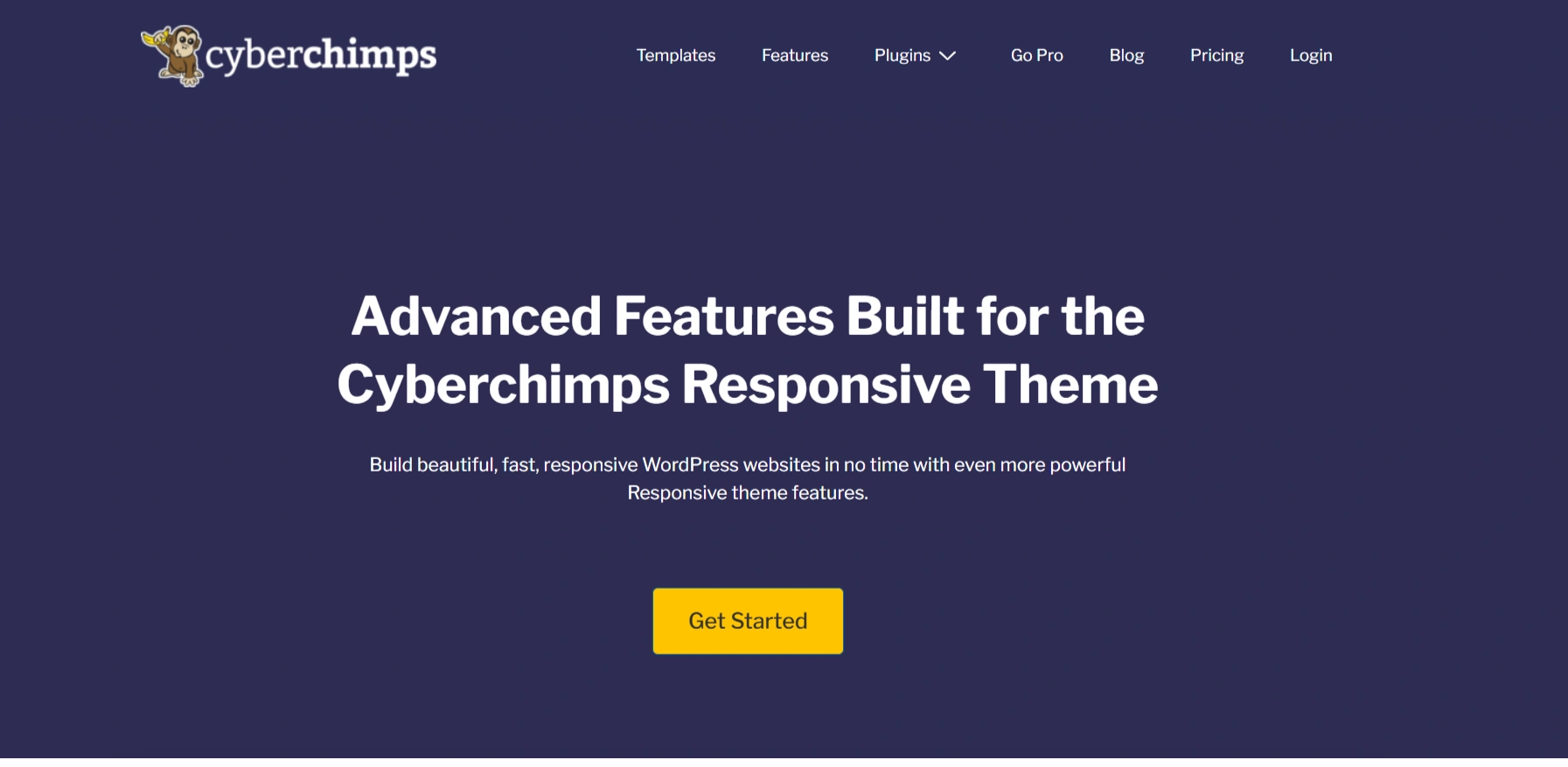
For an even faster setup, use the Responsive Plus Starter Templates plugin for free. These pre-built designs include fully customizable layouts specifically created for blogs. You can import a ready-made food blog template in one click and tweak colors, fonts, and sections to match your brand without touching any code.
5. Set Up Google Tools
Connecting Google Analytics lets you track your visitors, while Google Search Console helps monitor how your site appears in search results. These tools are essential for understanding your audience, improving SEO, and growing your blog strategically.
6. Install WordPress Plugins
Plugins add extra functionality to WordPress. For a food blog, you might want plugins for SEO optimization, recipe formatting, spam protection, and backups. The right plugins help keep your site secure and enhance the overall user experience.
How To Create A Food Blog Website With WordPress
Without wasting time, let’s start with creating a site.
Step 1: Domain Name and Hosting Service
Let’s start by setting up the hosting and domain for your website. We’ll be using Bluehost, as it’s a reliable hosting provider known for excellent performance, strong customer support, and beginner-friendly features.
Its pricing is also very reasonable, making it a great choice for anyone starting a new website.
Begin by clicking on the Get Started Now button:
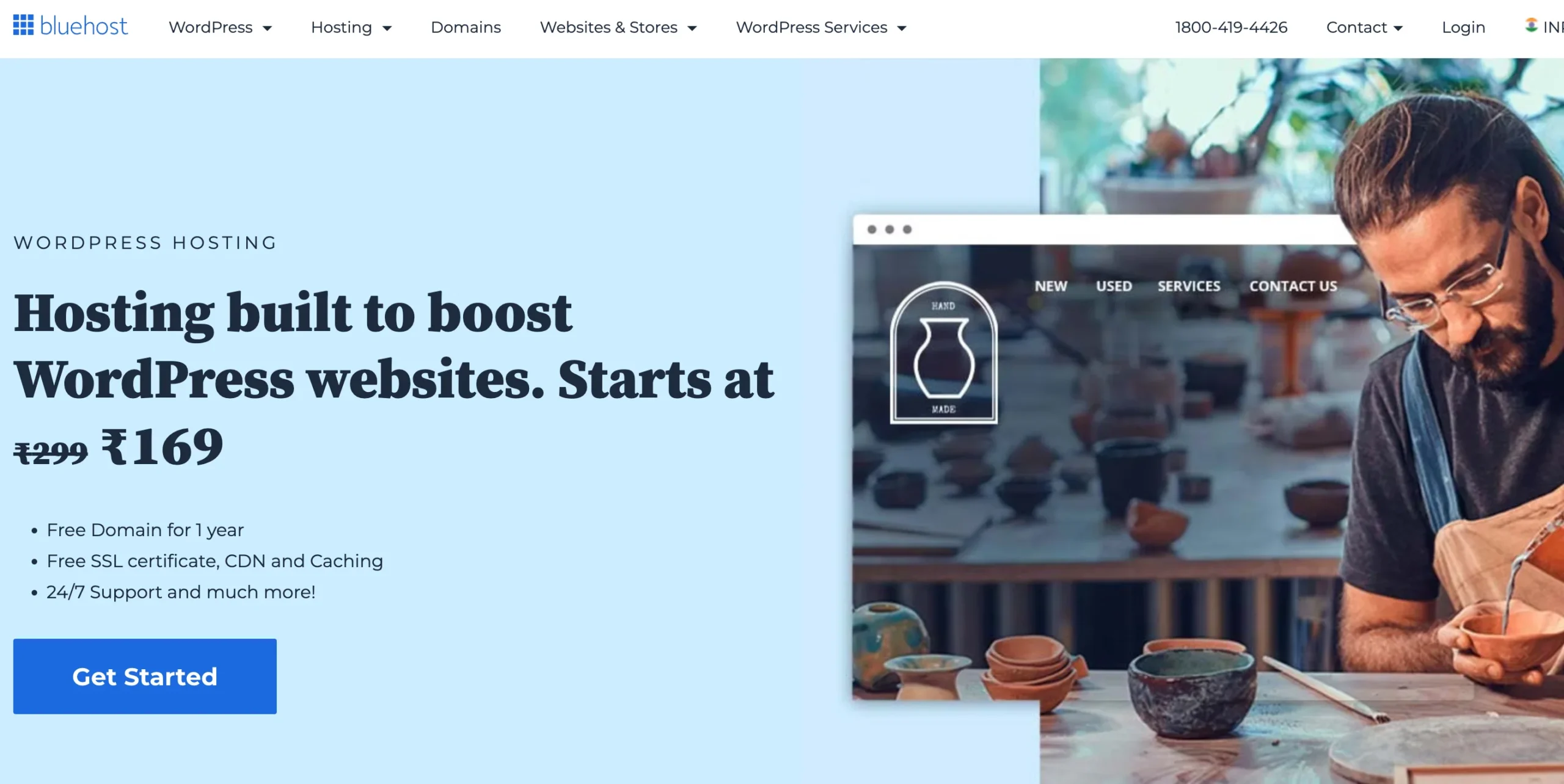
You will be directed to the pricing page. Select the plan that you want for your website.
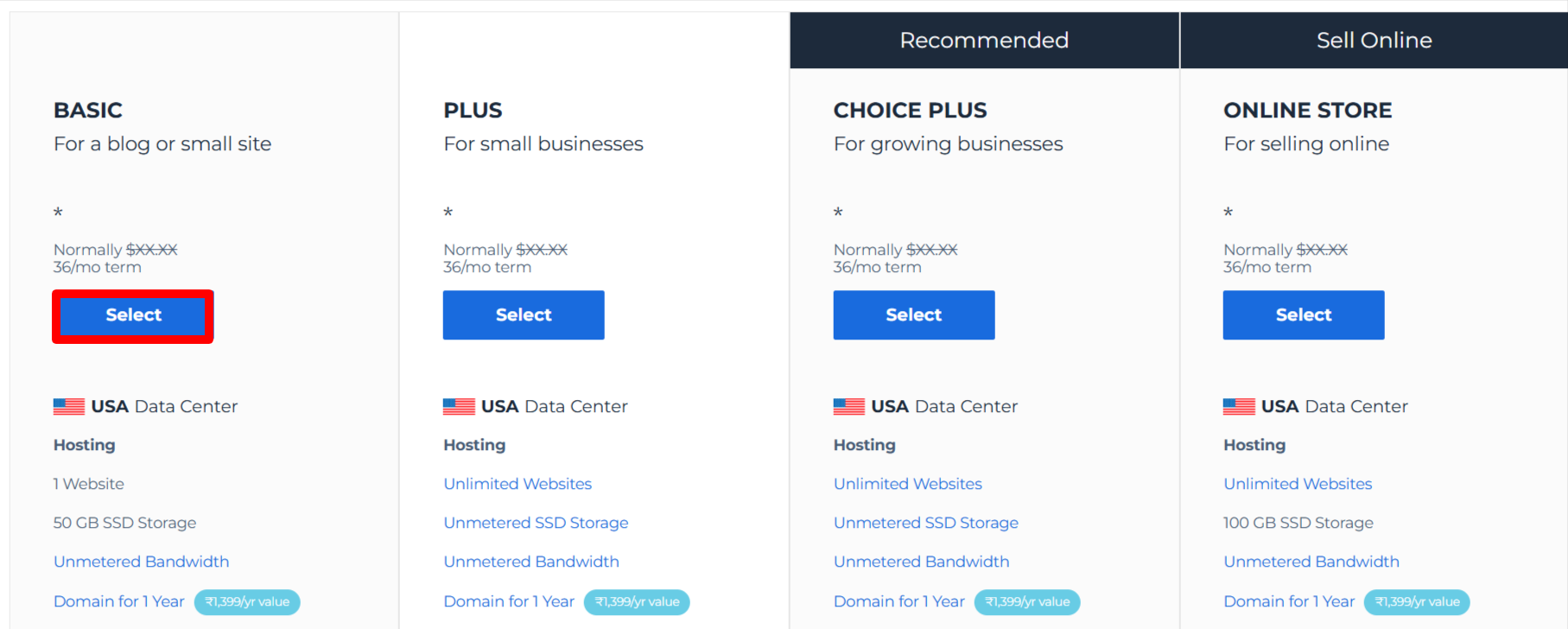
After selecting the plan, enter your website’s domain name (i.e., the name by which you want your website to be known).
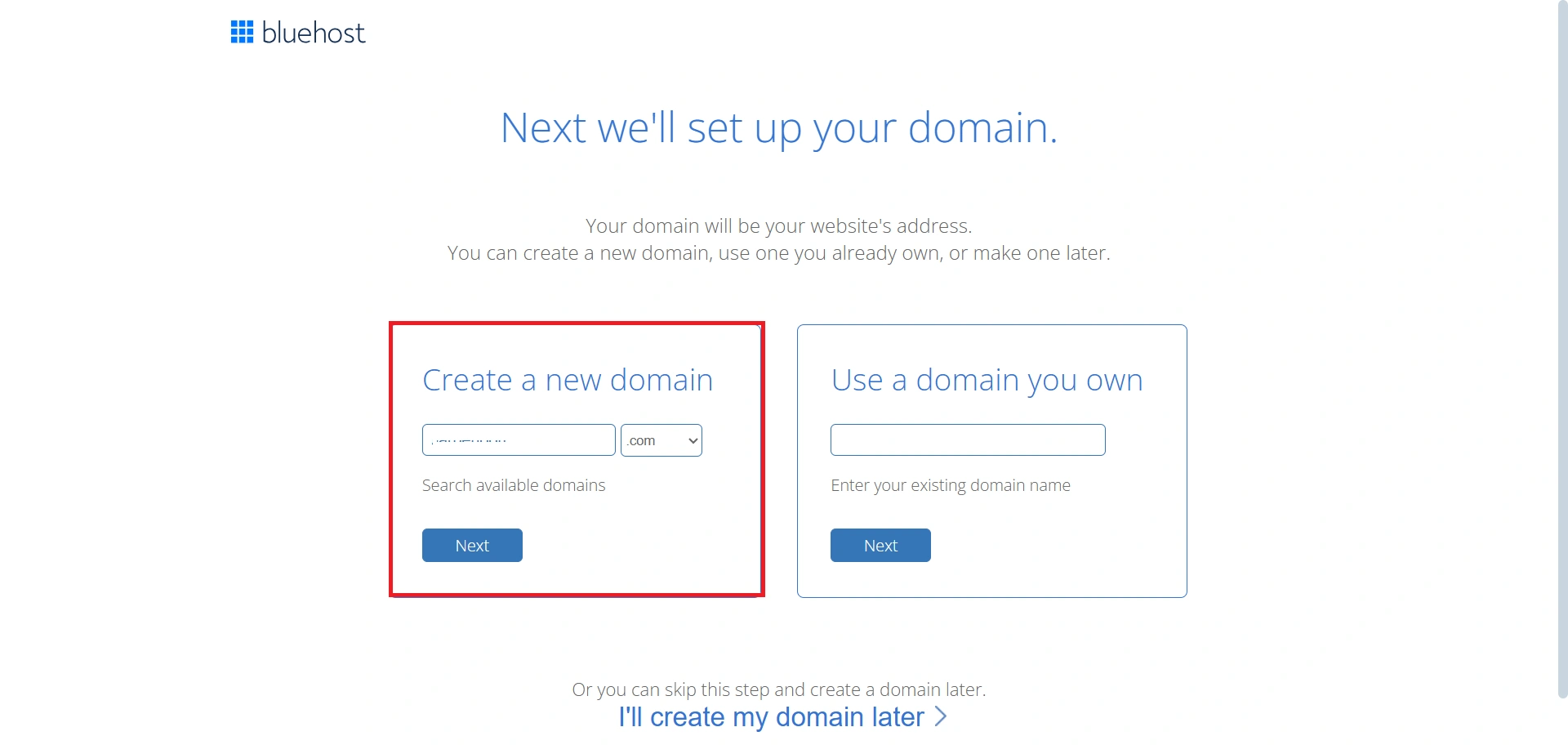
Then create your account and proceed with the payment.
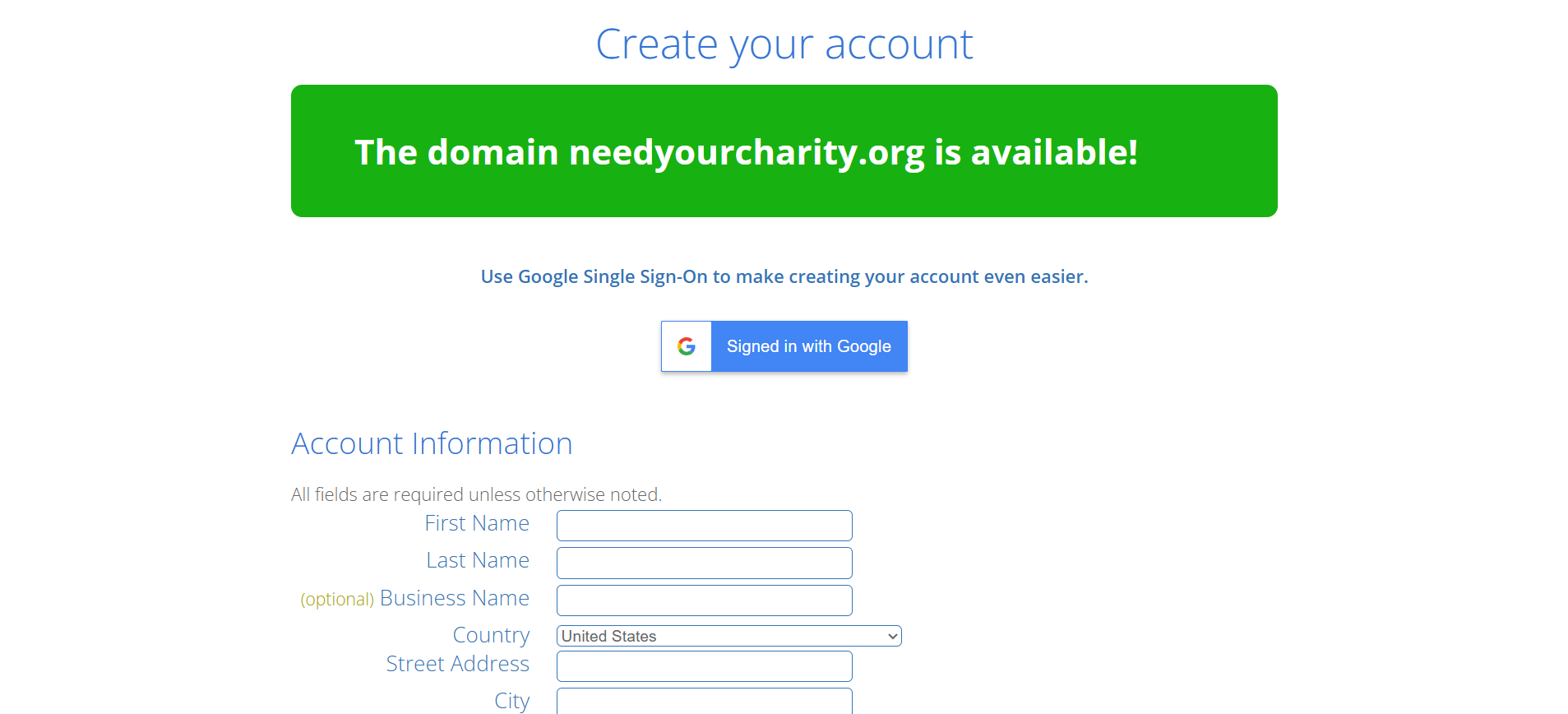
After adding the payment details, you’ll receive a confirmation email. Once you’re registered with Bluehost, you’re good to go!
Step 2: Install WordPress
After that, click “Create Password.“
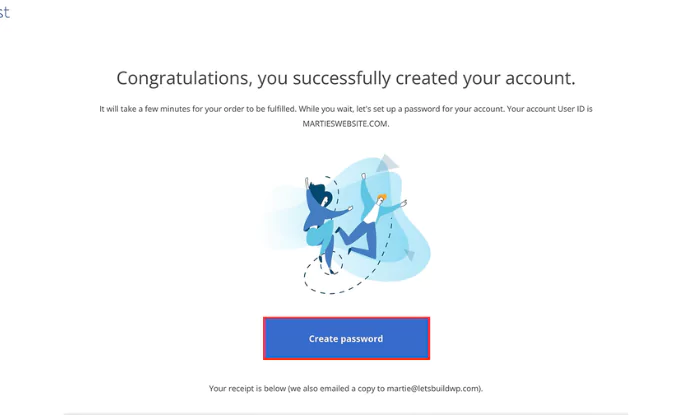
Complete a few more steps, and then this box will appear like a button to exit and start the installation.
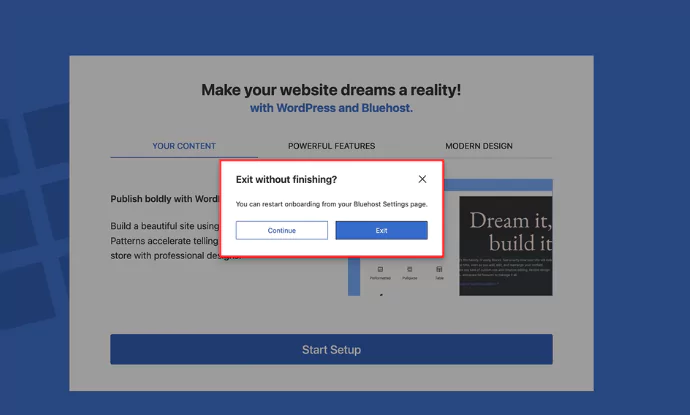
Congratulations! You’ve successfully installed WordPress, and now you are ready to build and customize your site.
Step 3: Install Responsive Theme
Follow the steps below to install the Responsive theme manually from the WordPress admin dashboard:
Go to your WordPress Dashboard > Appearance > Themes > Add Theme> Search for Responsive. Install and activate it.
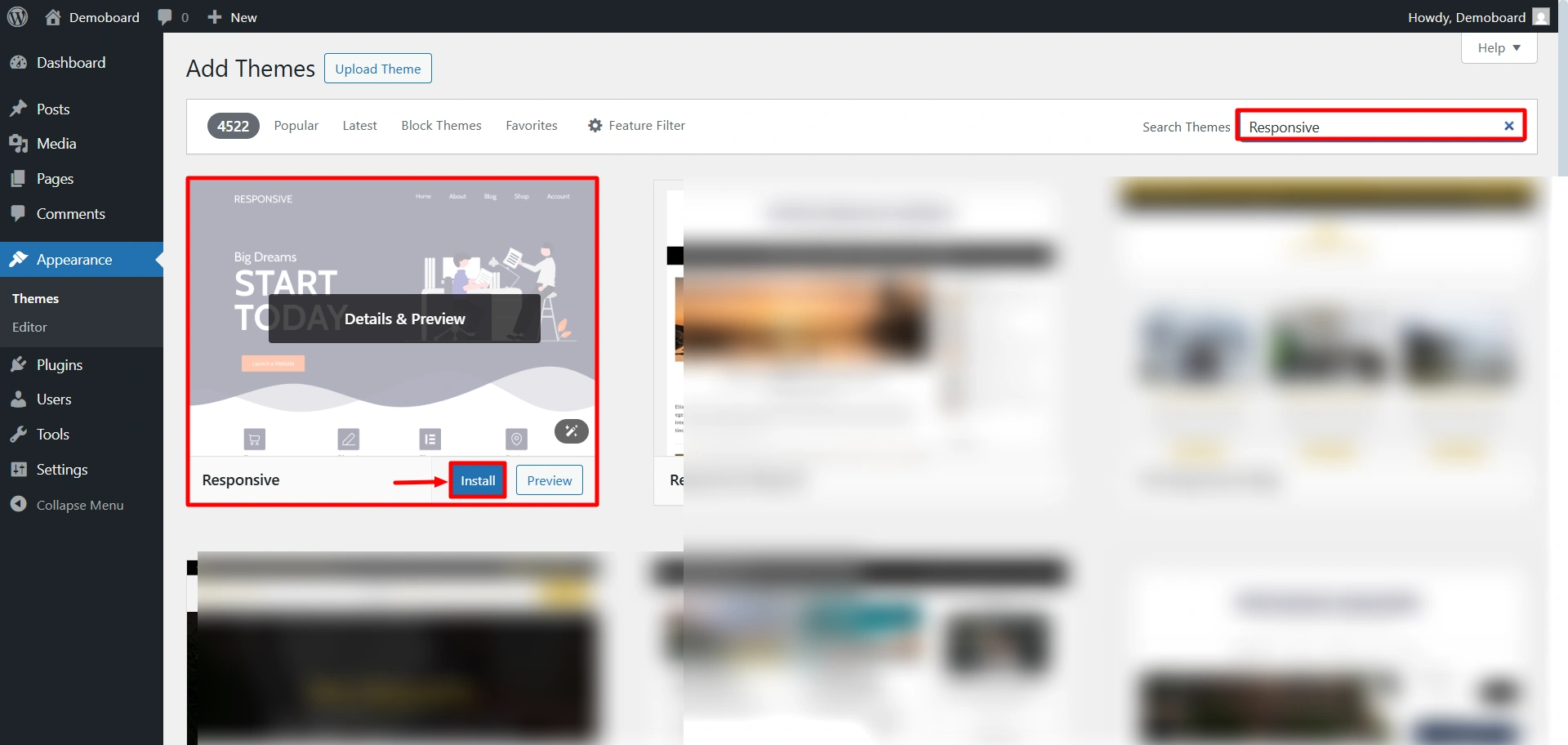
Once you’re done, it’s time to install the Responsive Plus.
The Responsive Plus plugin extends the functionality of the popular Responsive theme by adding the ready site importer feature.
It comes with free, ready-to-use WordPress website templates that can be easily customized using the Elementor page builder and Gutenberg Blocks
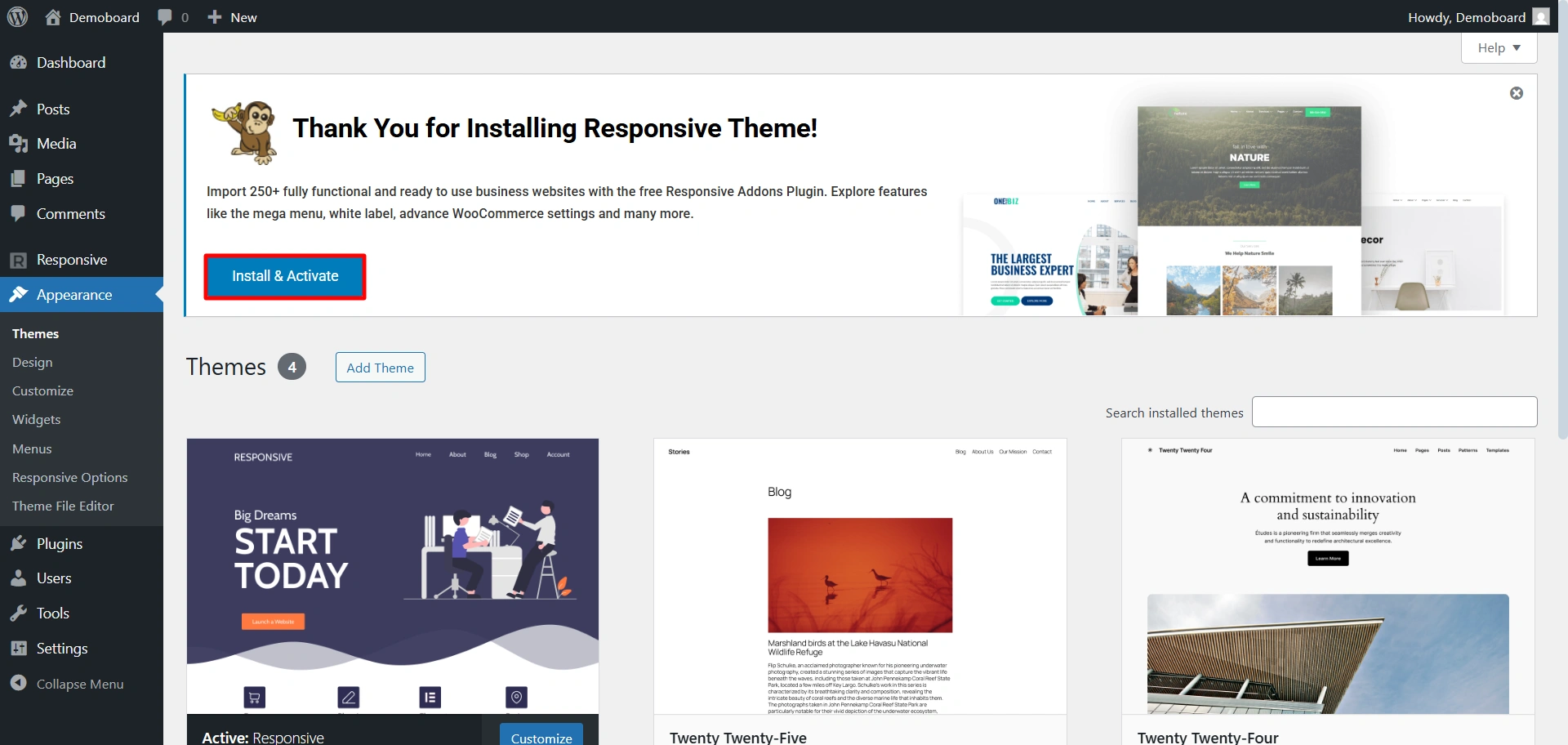
Now, let’s see how to import the food blogging website.
Step 5: Import Food Blogging Templates
Search for the food blogging template.
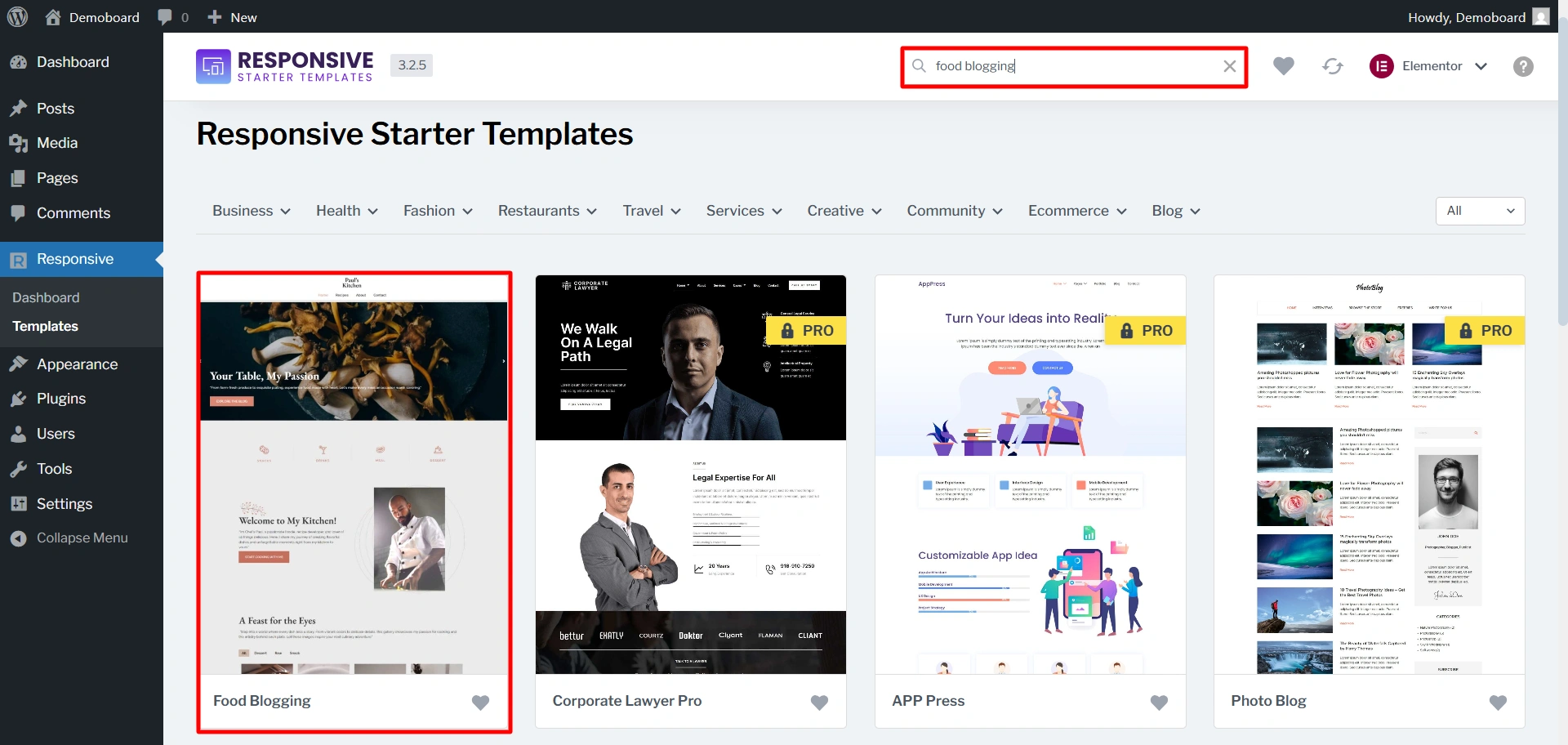
On the preview page, you can see the Import Site button.
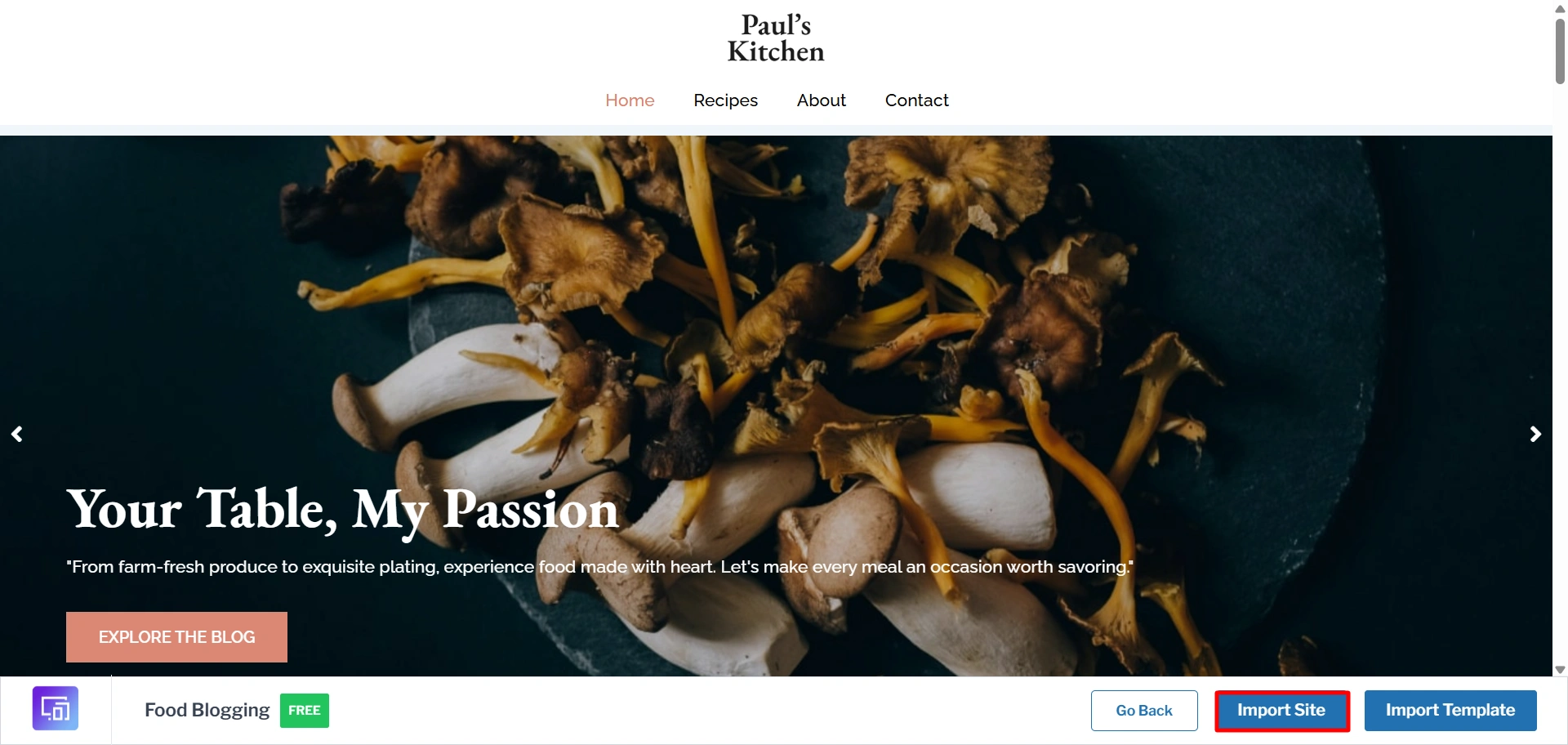
Once you click on Import site, it will ask you to connect your site with Cyberchimps Responsive. Create a new account.
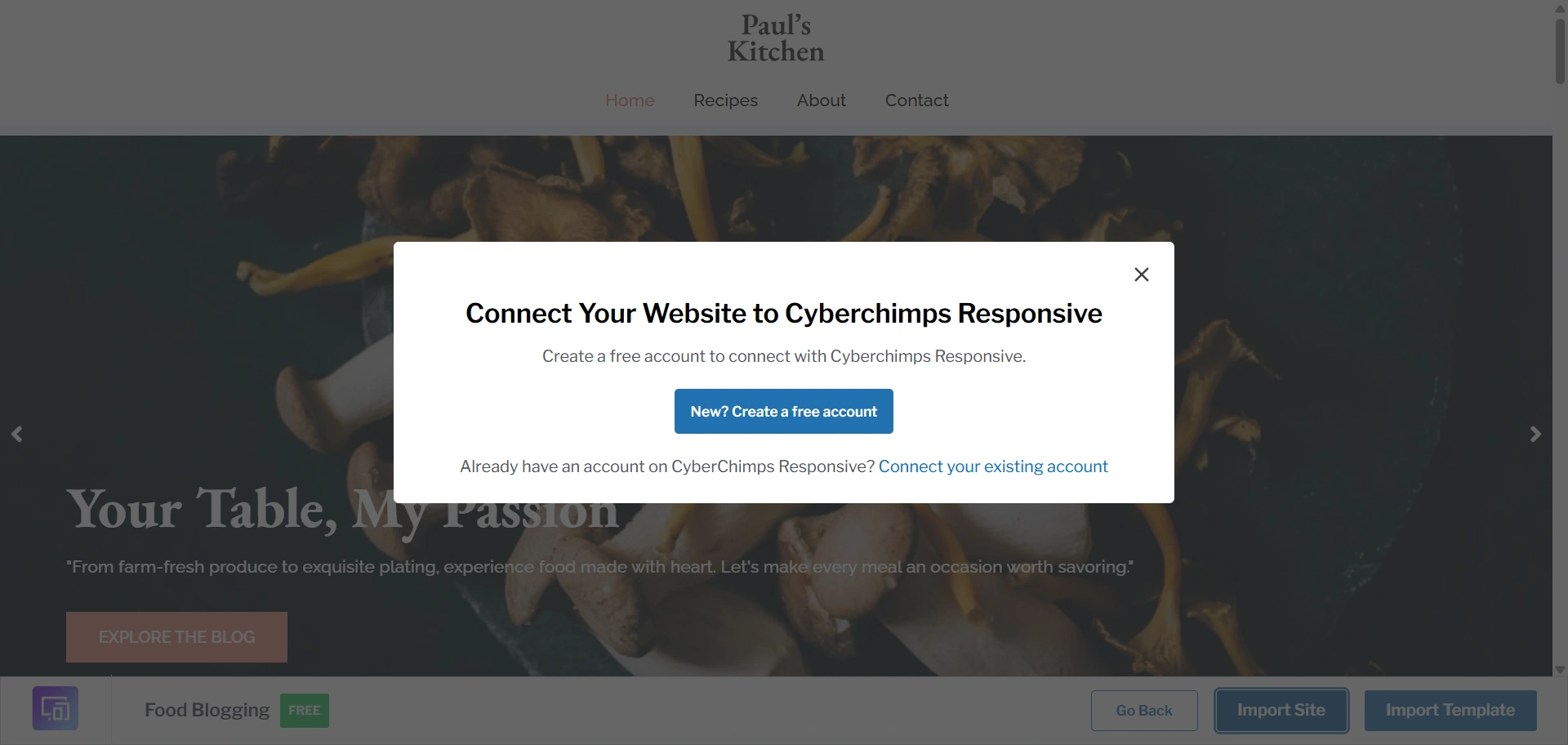
Click on Start Importing.
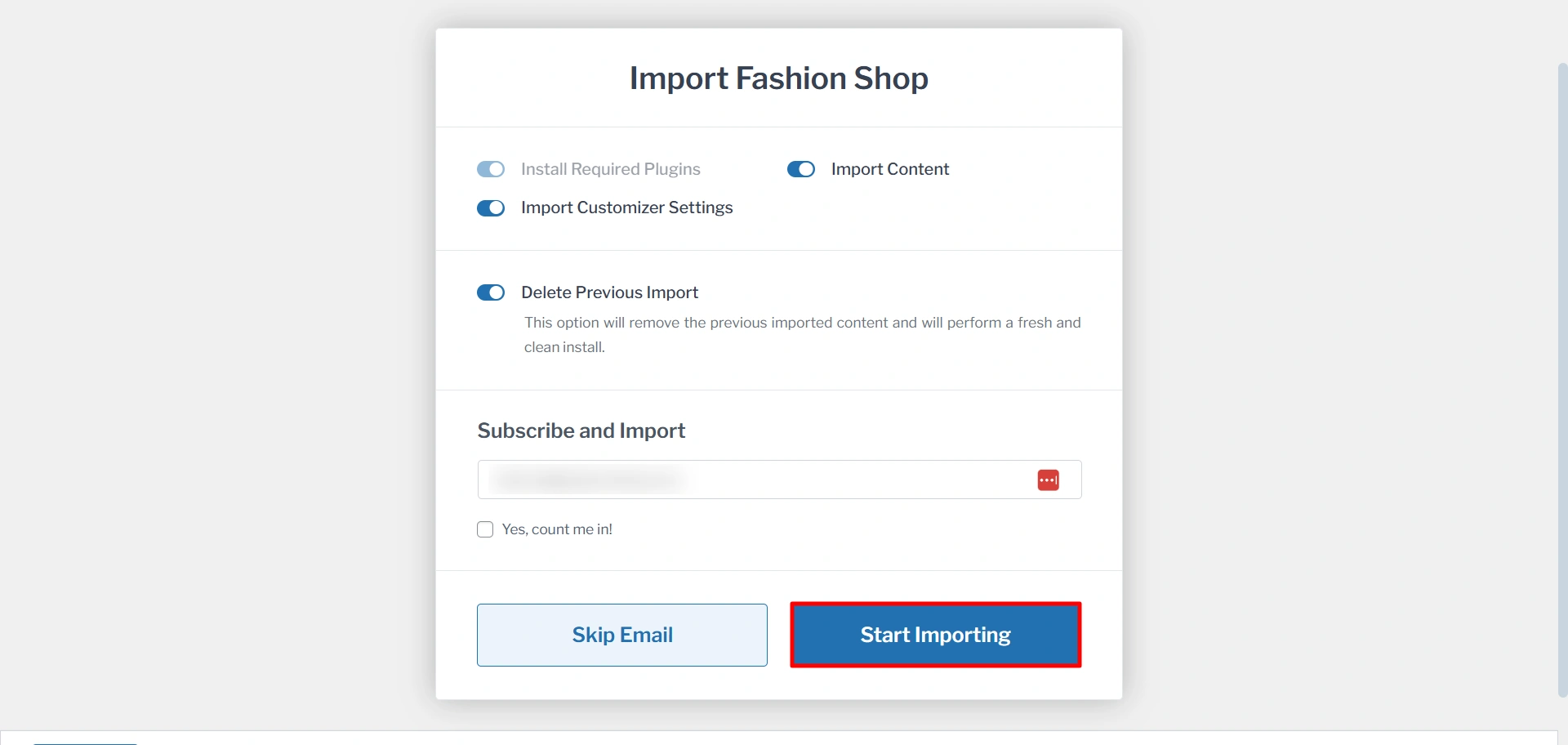
6. It will take a few seconds to import your site, then click on View Website.
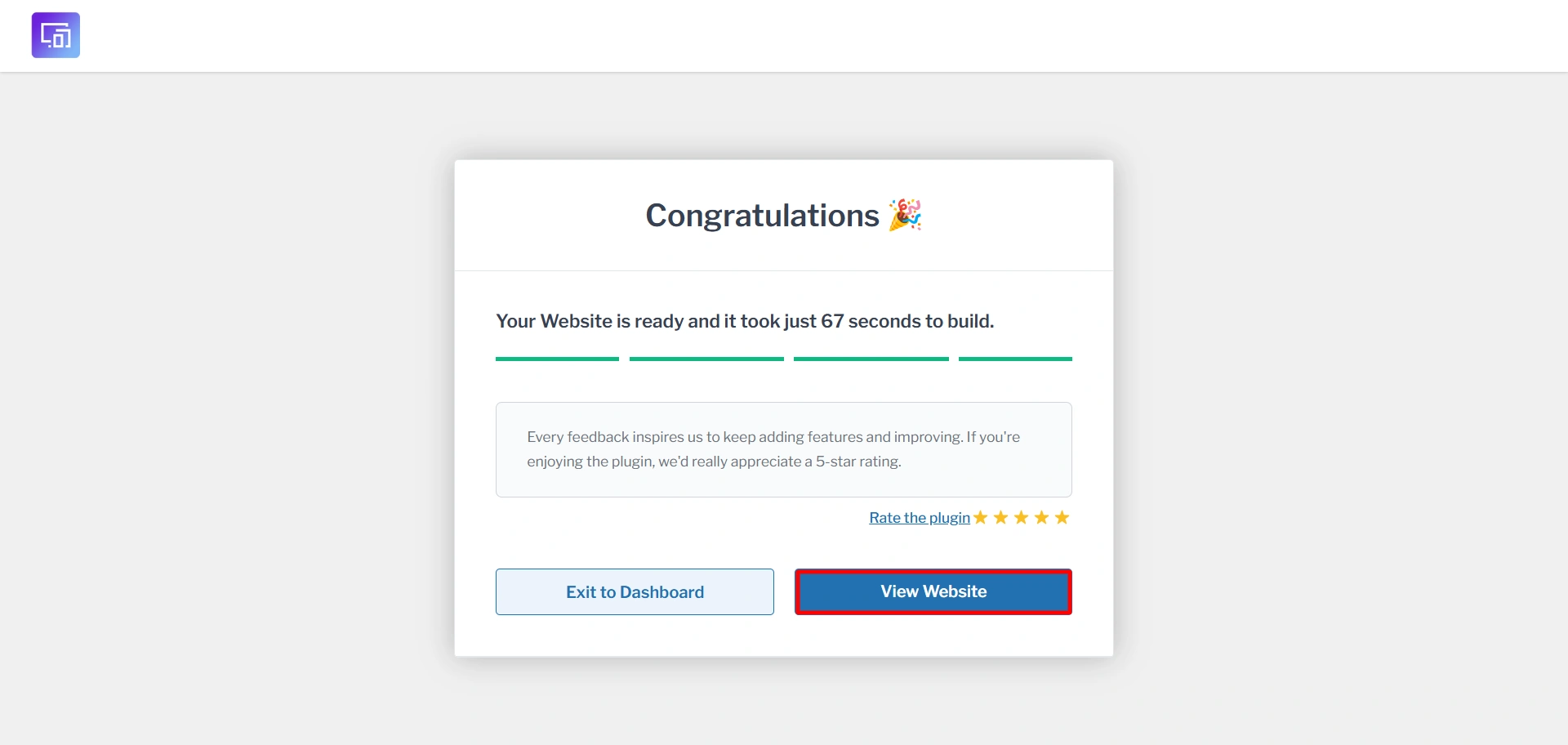
Step 6: Create a blog
To create a blog, you need to add posts to your site. Click on Post > Add Post.
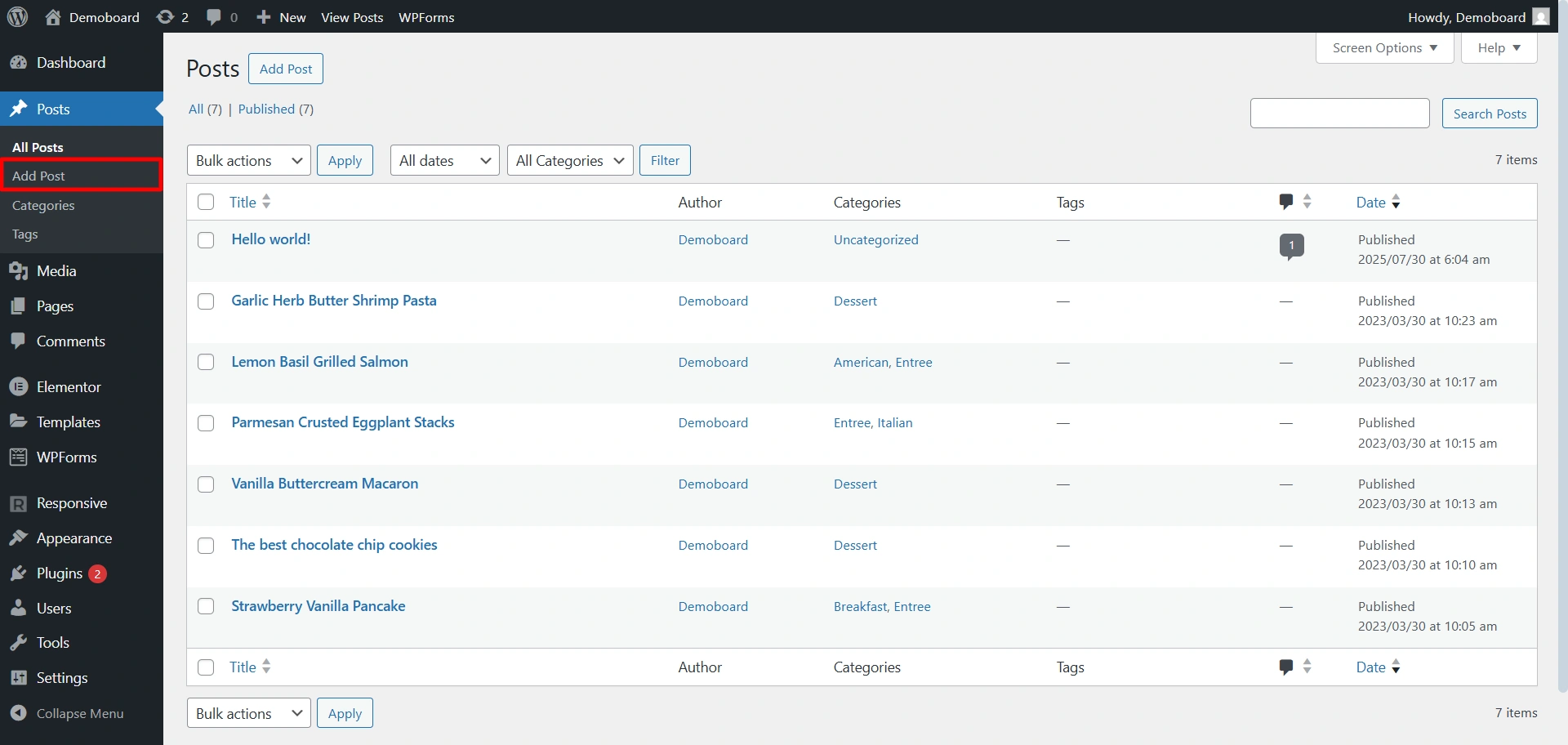
Now type your recipes and add a feature image to them, and you can publish them.
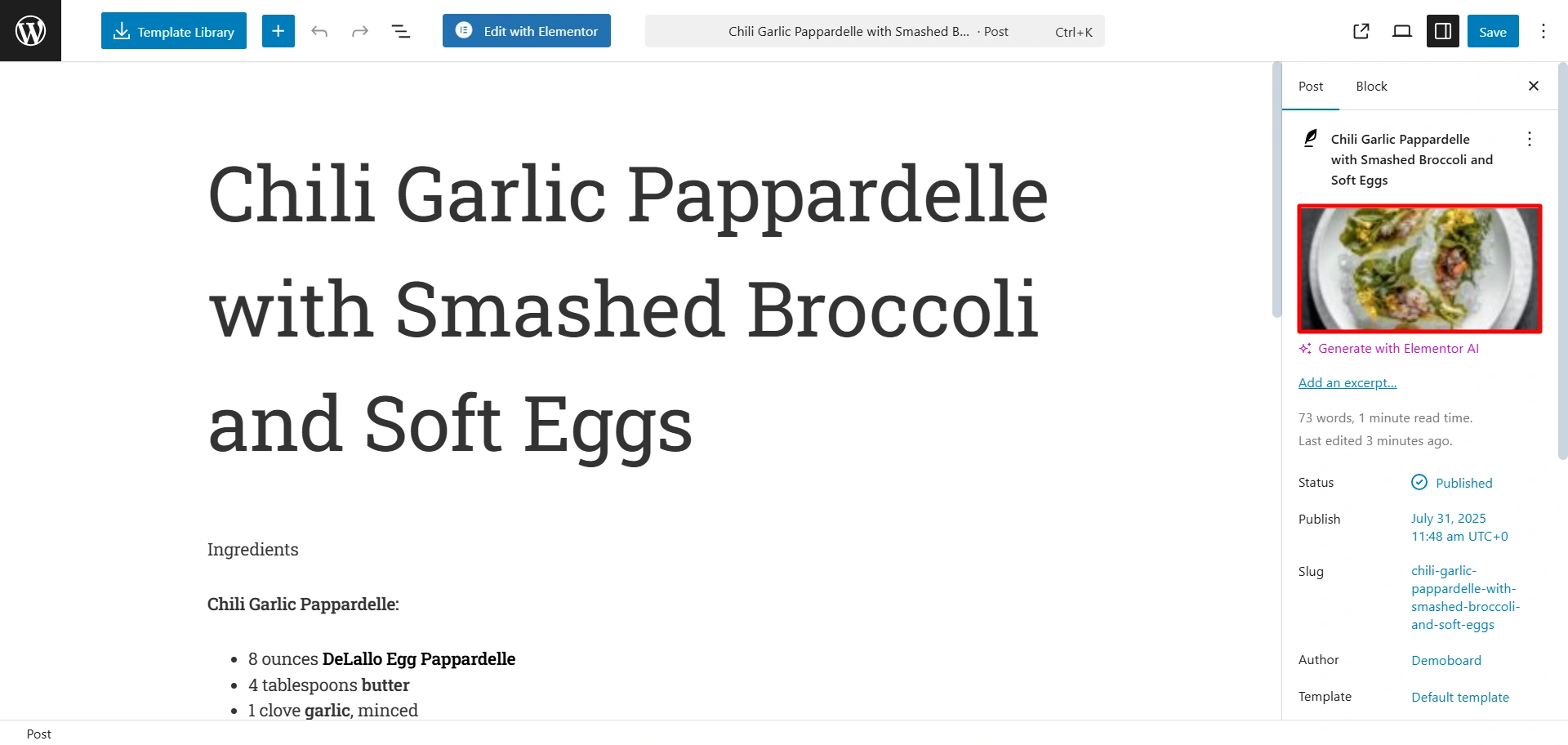
To view all of your recipes, go to your website and then click on Recipes.
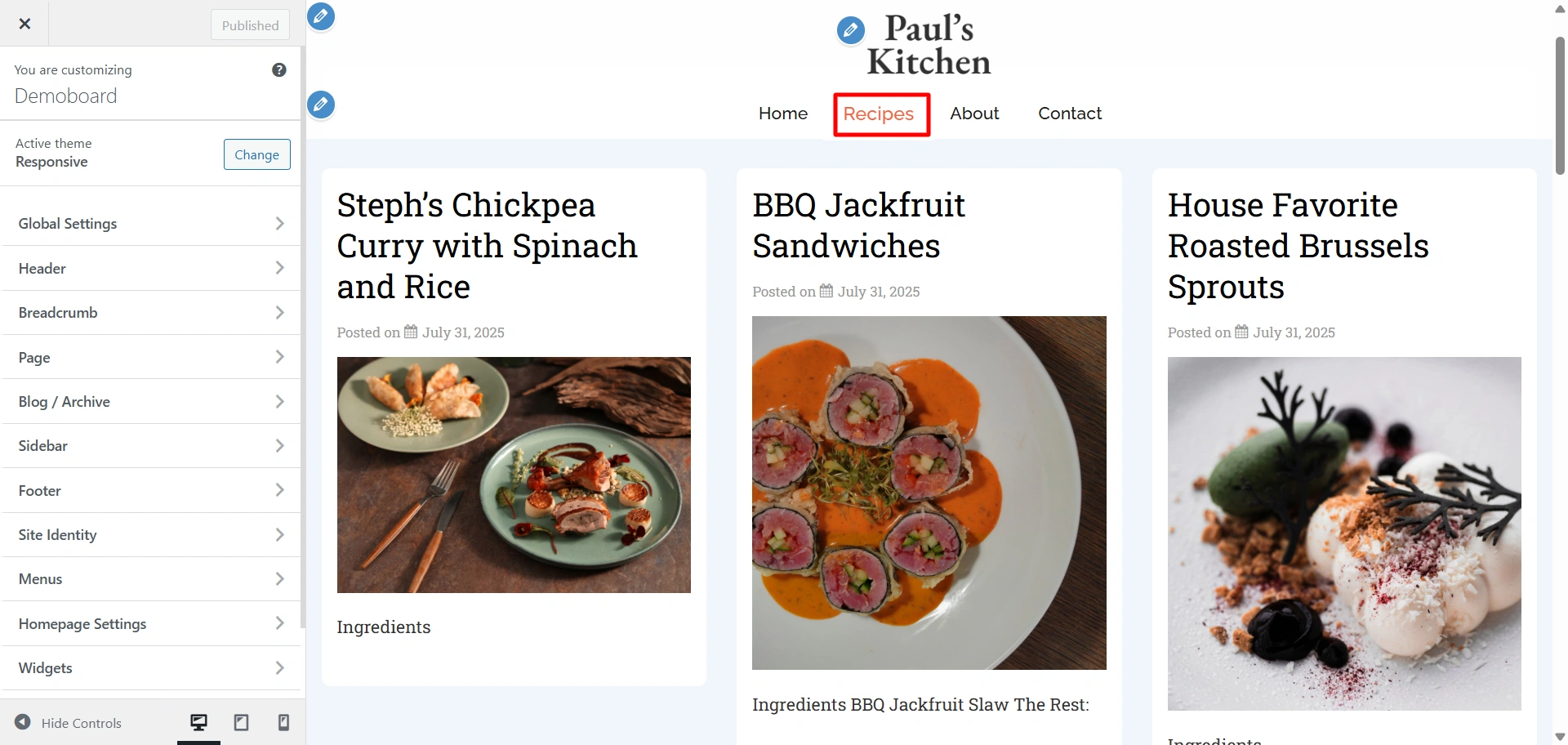
You can change the way your blog looks and arrange it accordingly. To do this, click on Blog/Archive and then again on Blog/Archive (to edit all blogs), or click on Single post to edit a single blog.
Arrange the blogs in layout, adjust the sidebar, and more.
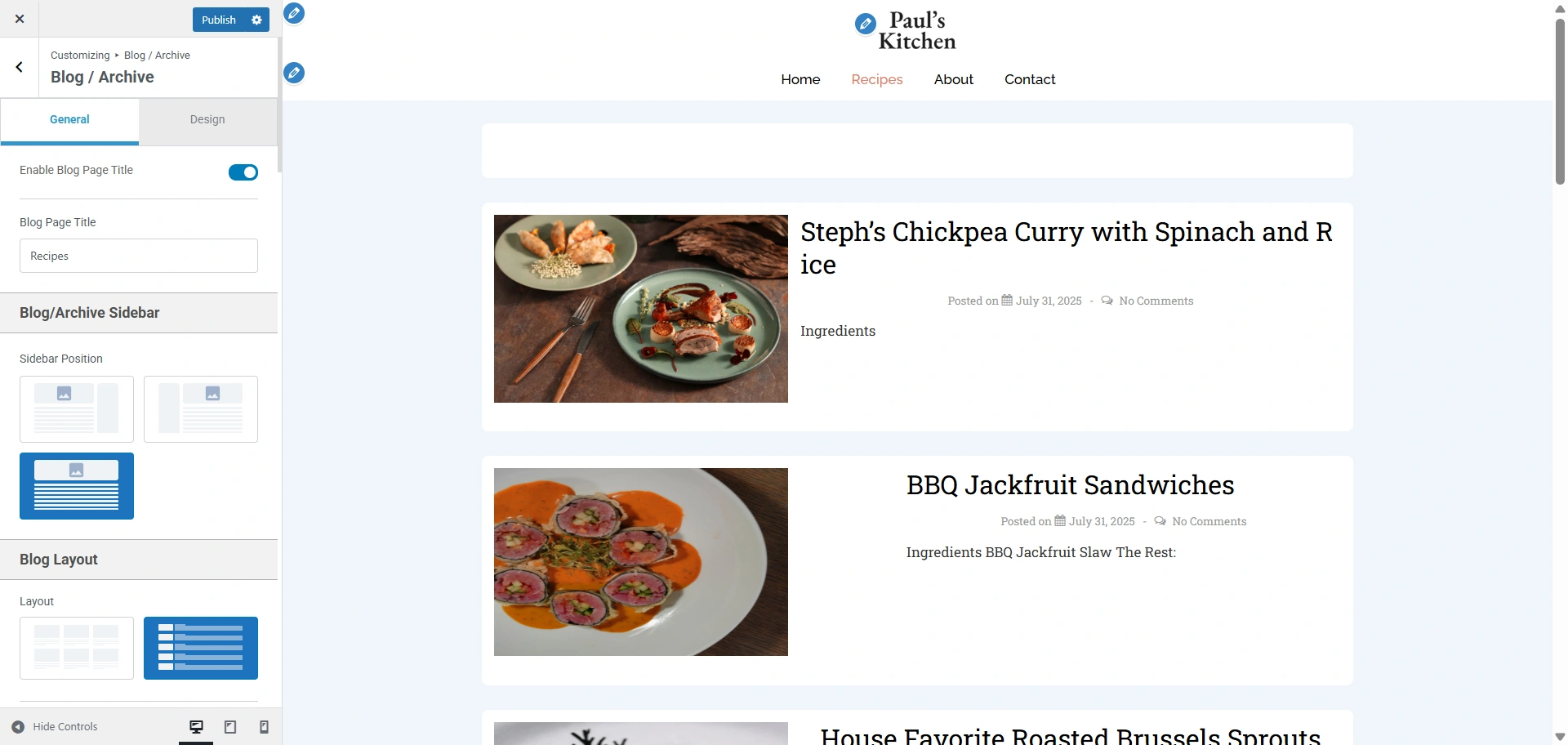
If you want to change the background of your site, go to Global Settings > Colours and Background, and in this section, you can select the color of your background and even colors for your headings.
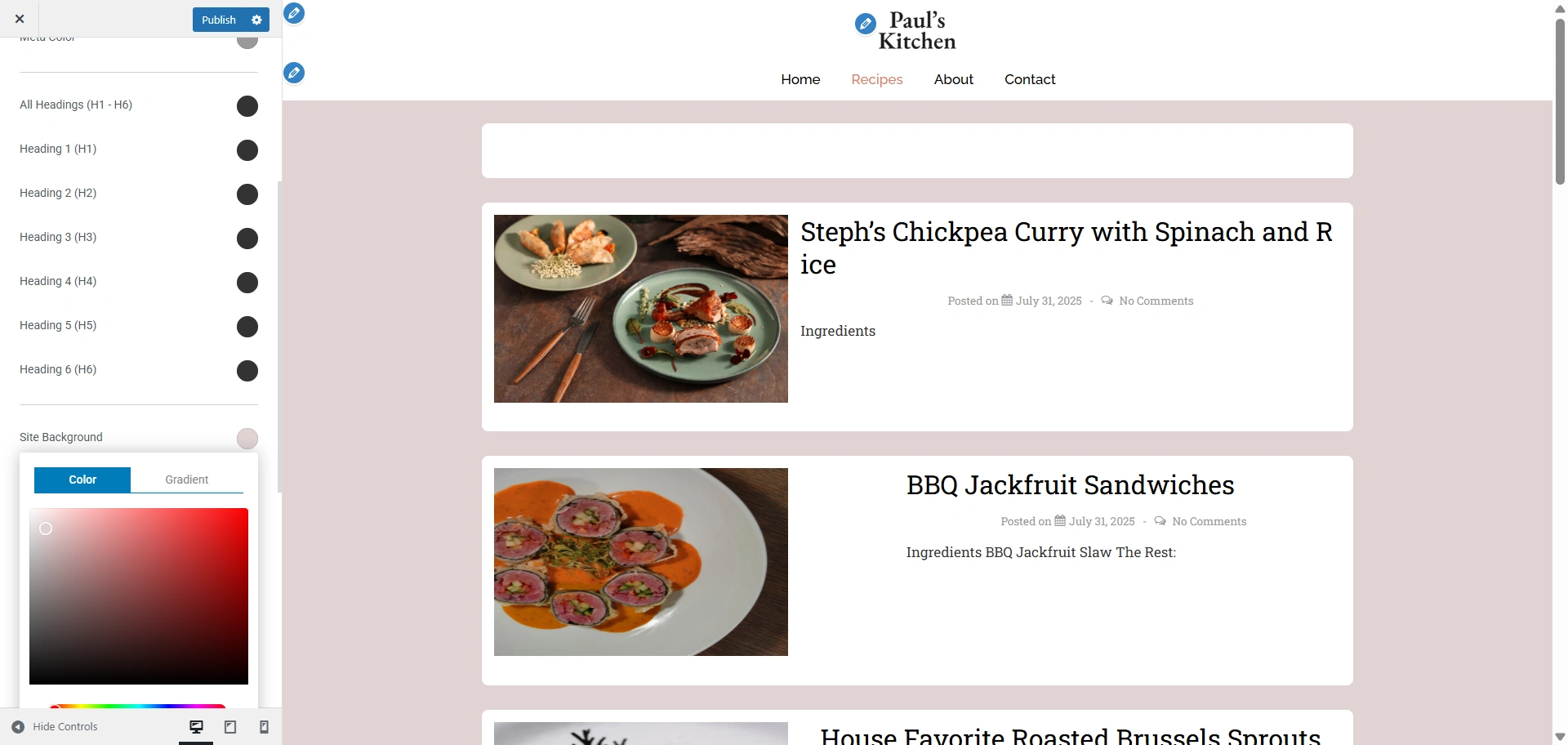
You can even change the typography of your site. The responsive theme provides you with the presets. Choose from them or create your own. You get this setting in the Golab settings.

When you are done with your customization, click on publish.
How to make money from your food blog
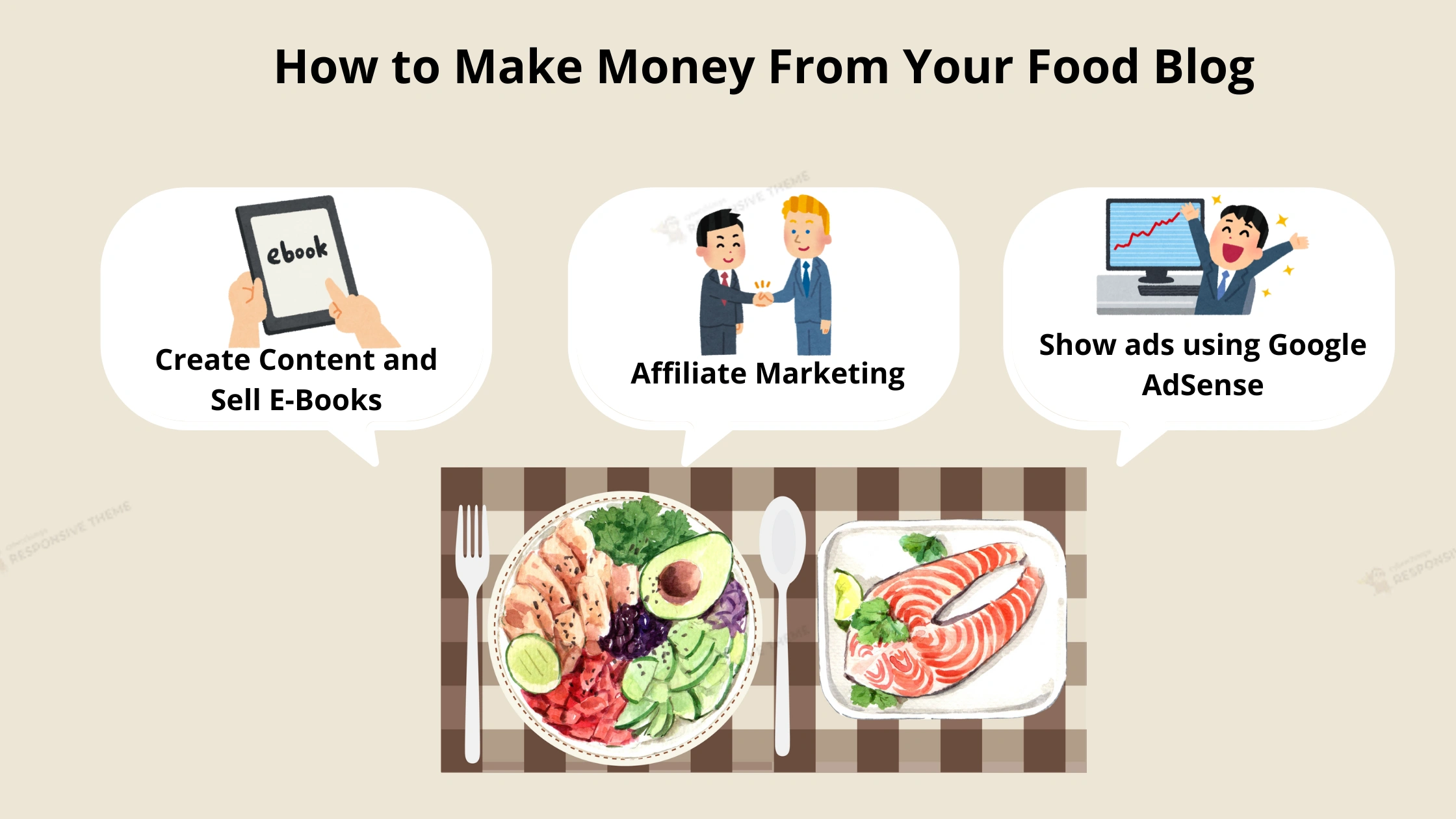
Food blogging is not only a hobby or a business. It is a very interesting community to be a part of and consists of posting recipes, advice, recommendations, as well as communication with the followers.
A successful food blog is not only about chopping, peeling, and baking. It includes marketing, managing, answering Emails, PR programs, etc. And that is exactly what takes a lot of time.
So, if you still want to start a food blog and become a professional food blogger, here are a few practical recommendations to consider.
- Create Content and Sell E-Books – The most effective strategy to earn money via a food blog is to sell your recipes via digital downloads. Now you can start thinking about what kind of content you’re going to post. It can be a website with recipes only or a website with recipes, recommendations, healthy lifestyle tips, etc. The only condition is that your content should be absolutely unique.
- Show ads using Google AdSense – Google AdSense is the easiest way to earn money from blogs. Adding it requires no coding knowledge at all. It will display relevant ads on your website, and you’ll earn money when your visitors click on these ads. The results will be immediate.
- Affiliate Marketing: This is another way of generating income when you start a food blog. Affiliate marketing is basically when you recommend related products using an affiliate link, and when your visitor purchases via that link, you earn a commission. So you need to find other food-related websites or products that run an affiliate program.
FAQ
No, you don’t need any coding knowledge. With WordPress, the Responsive Theme, and Responsive Plus Starter Templates, you can set up a professional food blog with just a few clicks.
Your hosting and Domain Name provider determines costs. With inexpensive hosting providers like Bluehost and with free themes like Responsive, you have to spend very little to start a food blog.
Yes! There are lots of food bloggers who make money from ads, affiliate marketing, sponsored articles, and selling e-books or online courses. And make money with high-quality content.
The Responsive theme is a great free, lightweight, and stylish theme. Responsive Plus offers a selection of ready-made food blogs to choose from, allowing you to import them with a single click, thereby saving you time and effort.
Conclusion
Although a food blogger is a relatively new career, it has already become one of the most sought-after careers for many people. So, don’t be afraid to turn your hobby into your business too.
Of course, if you’re passionate about cooking and ready to devote it to the biggest part of your day. So grab the free recipe theme and open your own platform to share useful tips, ideas on food, baking, and health.
Try to write down your recipes, complementing them with qualitative pictures, to find out whether a blogging profession is actually for you or not.
But don’t rush things, it does take time. Obviously, you’re not going to get rich the day after you open a blog. Invest in yourself and your business to get the first results. And you will see how easy it is.
So, what are you going to start with – curry, potato soup, paella, pizza, zucchini bread, kale and celery salad, pumpkin pie, cinnamon ice cream, or meatball recipe?
If you like the article, consider reading.
- Top WordPress Restaurant Themes
- The Ultimate WordPress SEO Guide for Beginners
- Best Social Media WordPress Themes For Influencers
Grab the Responsive theme today!

